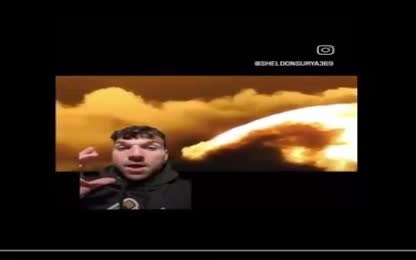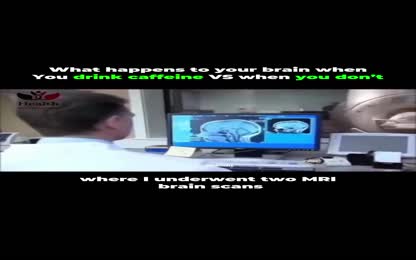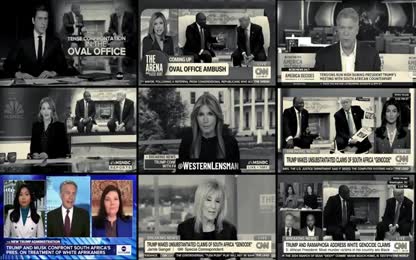Advertisement
Proof 9/11 was an inside job
[MIRROR] from Luogocomune
Proof 9/11 was an inside job
From 2017 by Luogocomune.net
- Category: 9/11 / WTC / Pentagon 2001,Alleged Terrorist Attack,Official Story Doesnt Add Up,Physical Impossibilities
- Duration: 23:03
- Date: 2019-11-03 09:33:42
- Tags: pentagon 2001, 9/11, alleged terrorist attack, government lie
2 Comments
Video Transcript:
While we were asked to believe that 19 Islamic terrorists were responsible for the hijackings, no one has ever produced a single image of these alleged terrorists boarding the four hijacked airplanes. All major airports in the world have security cameras practically everywhere, covering every public area of the airport 24 hours a day. But the only image of the terrorists released after 9-11 was this shot from the security camera showing alleged hijackers Abdulaziz Al-Mari and Muhammadata going through a security checkpoint. The two men, however, are not boarding flight American 11 from Boston to Los Angeles, but a previous connecting flight from Portland, Maine to Boston in the early hours of September 11. Only in 2005 were some images of the terrorists in one of the three airports released. They showed the group that allegedly hijacked flight 77, passing through security checks at Washington, Dallas. But the timestamp, which is always embedded in security camera recordings, was either cropped down or absent altogether. This means that the video could have been shot at any time prior to 9-11. There is another element that makes these images suspicious. In 2001, most security cameras functioned as time lapse photography, recording an average of one frame per second. This video instead is a continuous recording, similar to those obtained with regular consumer type camcorders. In any case, the fact remains that in 10 years, we have never seen a single image proving that the 19 alleged terrorists boarded the hijacked airplanes. While the military defense leaves many unanswered questions, even more doubts arise when taking a closer look at the 19 alleged terrorists. The first problem is that apparently these guys could barely fly at all. While they are known to have taken some flight lessons with small single engine airplanes, none of them had ever flown a jet before in their life, let alone a large commercial airliner, which is obviously a league of its own. Adam Shaw is an acrobatic pilot and a flight instructor with 6,000 hours of experience, half of which spent flying upside down. For people who are really pissed poor student pilots, to be able to get in the cockpit of big jets and fly them as accurately as they were flown at close to max speed and be able to hit the trade towers. The idea that someone could make the transition from a small single engine plane traveling in a hundred miles an hour to a commercial airliner traveling at 500 miles an hour without a long, exhausted training is very hard to believe. People don't realize that the hand fly and airliner at those speeds is extremely difficult in particularly if you're novice because a novice that's learned in little airplanes they over control everything. To justify this apparently impossible transition, the debunkers maintained that the terrorists had spent some time in flight simulators and that the equipment they encountered in the Boeing cockpits on September 11 was similar to the simulators they had trained on. But this is false. For example, the only simulator Hanihan Jor is known to have ever trained in is the Boeing 737, an airplane designed in the 70s with a totally different cockpit from the 757 he is alleged to have hijacked on September 11. If anything, his training would have confused him, not helped him in any way. Another argument by the debunkers is that all the hijackers really had to do once in the cockpits was to set the automatic pilot in order to reach their targets. But this is hardly what happened on September 11. Dave Bautiglia is the air traffic controller who followed the hijacking of United 175. After the sudden ascent, the plane started a breathtaking descent toward the ground. We were counting down the altitudes and they were descending right at the end at 10,000 feet per minute. That is absolutely unheard of for commercial jet. This is certainly not the way the automatic pilot would have taken you to Kennedy Airport. It is unbelievable for the passengers in the back to withstand that type of force as they're descending. They're actually nosing the airplane down and doing it what I would call a power dive. At 9.01 am, United 175 is hurtling at more than 400 miles per hour toward the Statue of Liberty and New York Harbor. One of the controllers started counting out the altitudes and he says, my God, he's going down at 8,000 feet per minute. Now it's 10,000 feet per minute and he counted off 8, 6, 4 and he says, my God, he's in the ground the next step. But he was not. According to the official version, Marwan Alshakey, a 23-year-old who has never flown a jet before in his life, levels the course, visually identifies the target and performs a spectacular banking maneuver that brings the 767 to hit the South Tower under the world's astonished eyes. Question. Marwan Alshakey had never flown a jet before in his life, let alone a huge airliner. How was he able to perform a sense of 3,000 feet per minute and plunges of 10,000 feet per minute while keeping full control of the plane and why would he want to take such unnecessary risks, including collisions with other airliners instead of flying safely with the autopilot towards the intended target? Zia Jira, the alleged hijacker of Flight 93, wasn't known for his piloting skills either. As reported by the 9-11 Commission in July 2001, he had asked to fly the Hudson Corridor near Manhattan with a small private plane. But because Hortman Flight School deemed Jira unfit to fly solo, he could fly this route only accompanied by an instructor. Yet we are asked to believe that only two months later, the same person was able to fully control a hundred-ton airline and perform some extreme descending maneuvers observed by Cleveland's air traffic controllers. I see this plane climbed up from his assigned altitude to 35,000 feet to 41,000 feet turned around and aimed right back at where we were and descended rapidly. And when a plane descends too fast, the computer can't keep up with it. Zia Jira had never flown a jet before in his life, let alone a large airliner, and even his experience with small airplanes was rather poor. How could he perform a descent so fast that the computer can't keep up with it while maintaining full control of the plane and why would he need to take such an unnecessary risk, including collisions with other airplanes instead of safely flying with the autopilot towards the intended target? The feet of the century must be awarded to Honey Han Jure, a hopeless amateur who is alleged to have been at the controls of American 77. As he finally reached Washington and had the Pentagon in sight, Honey Han Jure did not make the easy choice and just plunged the plane onto the roofs of the building. He instead disconnected the autopilot and performed a hand-flown high-speed descending maneuver of 330 degrees that brought him to lose sight of the target again while forcing him to a much more difficult approach close to the ground. Seen from above, the Pentagon offers some 30 acres of unobstructed target, hitting it anywhere on the roofs would have caused a major devastation and possibly thousands of casualties. Coming in from the side instead, the approach is filled with obstacles and the target is reduced to a tiny strip of cement coming at you at 500 miles an hour. The debunkers however seem to have a good explanation for this apparently illogical maneuver. Normally the air guard is trying to get into trouble. So if you want a pilot, the pilot immediately says that the most difficult maneuver is to make a pilot expert. A pilot of a combat scar, uses the air as if it were a bomb or it is flying horizontally, flying down to the ground. This very question has already been posed to professional pilots, but the answer was not what Octavius Simo claims. If you want to simulate the flight of one that wants to fly, you have to be sure to surely fly this part. If you want to fly, you will arrive at the top. They will fly here because they also fly these buildings, the first ones that come, or they fly here, they are on the ground, so they are created, anyway, a damage. Flying a jet near the ground instead does require some major skills even for the most seasoned pilot. So if you want to fly a jet near the ground, you have to fly a jet near the ground with a plane that weighs 110-120 tons, you have to fly a jet near the ground with a plane that weighs 110-120 tons, you have to fly the jet near the ground with a plane that weighs 110-120 tons, you have to fly a jet near the ground with a plane that weighs 110-120 tons, you have to fly the jet near the ground with a plane that weighs 110-120 tons, you have to fly a jet near the ground with a plane that weighs 110-120 tons, you have to fly a jet near the ground with a plane that weighs 110-120 tons, you have to fly a jet near the ground with a plane that weighs 110 tons. The debunkers insist that the maneuver would have been doable even by an amateur like Hanihan Jor. It's not a job. It's just a job. It's a very old job. There are days when the P.I. Barke says, well, we're going to do the test. To prove their point, the debunkers refer to a documentary by Dutch television in which the Pentagon attack is replicated in a flight simulator. Thank you, Mr. Thank you, Mr. Where did you get the feedback before? It was there before that it was the robot that was bigger, so it was about two meters between the legs. We're now in the teeth. We're now in the teeth. It's more than we need to use the fast one. It's a little harder than normal. It's a pentagon, it's a full-ghost. It's a full-ghost. I'm a question. I know what he's here. I'm here on the day. I'm here on the day. I'm here on the day. I'm here on the day. But this simulation doesn't seem very accurate. First of all, the approach is made from a much higher angle, while the real plane came in solo that eclipse some of the light poles as it was flying at ground level. Secondly, the documentary doesn't offer precise indications on the speeds used during the simulation. In a more accurate simulation, done with a pilot with an experienced similar to Hanihan Jor, the results were quite different. OK, you're 311 knots. You want to go all the way around? Yeah, exactly. I'm going to get back out to sit here. You can feel it right now. You can feel the G-forces? Yeah. All right. Go for it. Go towards it. You're 360 knots. You're 424 knots. And again, the radius of turn is becoming so great. Yeah, you turn it too hard. Keep it turning. Keep it turning. Keep it turning. Keep it turning. Now go down. Die for it. Yeah. Yeah. There's 500 knots. Keep it going. It's very touchy. I can understand. Now you're going on your back. You're going on your back. Keep it rolling. Keep it rolling. You did something, but obviously it was not that building. 170 knots. Oh, come on. Hang on. I'm again. I'm going to get him. 440 knots. All right. You're going on your back. Don't miss them. I'm missed again. There's no denying. It's incredibly difficult. Especially with that turn that the NTSB data set, boy, 77 made, and then he levels off and then pretty much just guns it straight in. That straight path right in is really incredibly difficult. Correct. I couldn't do it. You couldn't do it. Not at that speed. Not at 500 knots. In fact, the air traffic controllers were so impressed with the speed of the maneuver. They thought they were looking at a military jet. But nobody knew that was a commercial flight at the time. Nobody knew that was American 77. What did you think it was a military flight? I thought it was a military flight. It was really moving fast. It was moving very fast. Like a military aircraft, it might move at a low altitude. Air traffic controller Danielle O'Brien stated, the speed, the maneuverability, the way that he turned, we all thought in the radar room all of us experienced air traffic controllers that that was a military plane. You don't fly 757 in that manner. It's unsafe. Several military and civil pilots have expressed their skepticism about the maneuver. Commander Ralph Colstad is a former fighter pilot, air flight instructor, and a retired commercial pilot with 27 years of experience. At the Pentagon, he stated, the pilot of the Boeing 757 did quite a feat of flying. I have 6000 hours of flying in Boeing 757s and 767s, and could not have flown in the way the flight path was described. Commander Ted Muga, former civil and military pilot, I just can't imagine an amateur even being able to come close to performing a maneuver of that nature. Captain Russ Wittenberg, a former fighter pilot and an airline pilot for 35 years, for a guy to just jump into the cockpit and fly like an ace is impossible. There is not one chance in a thousand to expect the alleged airplane to run these maneuvers with a total amateur at the controls is simply ludicrous. We able to fly that curving, descending, higher speed trajectory into a very low building. You have to be Chuck Yeager to fly that trajectory. Not only was Hanih Hanjur no Chuck Yeager, but apparently he was a terrible pilot with small planes as well. An instructor from one of his flight schools stated, Hanih Hanjur was not someone cut out to be a pilot. He had no motivation, a poor understanding of the basic principles of aviation and poor judgment combined with poor technical skills. The debunkers contend that Hanjur had obtained a regular pilot's license and therefore he had to be able to fly. But it is exactly because of that license that major suspicions on Hanjur kept emerging. In a 2002 article called A Training Noted for Incompetence, the New York Times wrote that Hanjur was reported to the aviation agency after the instructors had found his piloting skills so shoddy and his grasp of English so inadequate that they questioned whether his pilot's license was genuine. The article concludes quoting a former employee at the flight school who said, I'm still to this day amazed that he could have flown into the Pentagon. He could not fly at all. The manager of another flight school in Phoenix said, I couldn't believe he had a commercial license of any kind with the skills that he had. At yet another flight school in Maryland, instructors found he had trouble controlling and landing the single engine CESNA 172. This was confirmed in this radio interview by Nile Sagadevan, a pilot and an aeronautical engineer. I gotta say something about Hanjur. I've spoken with two of his fighting instructors. This guy could not solo a CESNA 150. He's a little single engine 2C trainer. And what I mean by solo is a pilot's first time out without anyone else in the cockpit with him. It's the most simple, most fundamental flying exercise one can engage. You'll see it inside there. You'll hit the bar, you take off, make up the 90 degree turns, maximum altitude of around 900 to 1000 feet, come back and land. One. You think this alleged hijack or Hanjur could not solo 150? He could not solo. In fact, one of his flight instructors and I quote him, he said, the man could not fly at all. How could an amateur who was deemed unable to fly solo in CESNA 150 had a poor understanding of the basic principles of aviation and had never sat once in the cockpit of a 757. Suddenly, become able to control such a large airliner flying at top speeds. And even assuming he was able to reach Washington with the autopilot, why would he want to disconnect it and hand fly the plane for another eight long minutes, performing a totally unnecessary descending maneuver that A, would have drastically increased his chances of an unwanted crash, B, would have increased the danger of being intercepted, C, would have made him lose sight of the target again, D, would have forced him to a much more difficult approach near the ground, E, would have shrunk the target to a tiny strip of cement, F, would have limited the possible damage to the external rings only, when he could have maximized the damage and ensured the most spectacular outcome of the mission by plunging the plane onto the Pentagon's roofs from above. The 911 report says that Honey Honey was the best train of all the pilots, all the high-diaggers of 911. If he's the best train, I'm Superman. Right now you're watching Superman, right now, or after this, I will fly out of this room. What else he does? In April 1999, he gets his pilot license, with a spike of the lack of skills. And it's not me, Michal, saying this, it's actually the people that train this kid, and it's actually the government of the US saying these things, you hear, between 96 and 98, a weakest student, okay? Was wasting our resources, that's what the flight training facility says. He had only the best understanding what the instruments were there to do. So he said really bad, bad, bad, bad, really bad student. Well, this is what they say at the jet training center. They say, despite the, he begin passing jet training at other flight schools, obviously because they keep him out of this one. Despite having limited flight, flying skills and an extremely poor grasp of English, just like mine. This is the Federal Aviation Administration on a report on 2002. It's not me, it's the government, okay? It's the flying, it's the facility saying these. It's the school saying that he doesn't have a clue of what he's doing. If you read here, since a new pilot skills were so bad, the issue is now, or is how he was able to get a license on the first place. I mean, who gave this kid a pilot license? He wasn't training, and he wasn't capable of flying a plane, okay? Now, who is saying this? What's into post and CVS? But also, since a new pilot skills were so bad, the issue of how he was able to get a license remain a lingering question that if a official refused to discuss. Okay, so we have a group that I belong to, which is called 911 pilots for truth. For 911 pilots, you know, pilots for 911 truth. And they're really active in the US. Here in England, it seems like they're not that much. And I'm one of the few in Spain. And we all send letters to our civil aviation departments, you know, administrations asking the same question. Well, obviously in Spain, they refuse to say anything, because they don't know English, period. So that's my problem. But anyhow, in the US, they just don't want to talk about this. You know, January and February 2001, flight school repeated, repeated warnings about Hanyur ignored by the EFAA. And again, I'm just going to, if you burn with me, I'm just going to read a little bit of these lines, flight school jet tech alerts EFAA about hijack at Hanyur, why lacks both the English and flying skills necessary for the commercial pilot's license he has already obtained. And actually that license was spired. Because in 2001, he didn't go through a medical examination. We have to go now about 40. So I have to go twice every year. And then he was under 40, so he had to go at least once to get his first class medical certificate renewed. So his pilot license was expired. So actually the school was doing wrong. But he knew also that he was doing wrong. But the problem is not that. The problem is fail his singles, okay. Classes with a 0.26 grade point average. Didn't know how to speak English at all. I'm still to this day amazed that he could have flown into the Pentagon. He could not fly at all. In February, Hanyur begins advanced simulator training, a far more complicated task that he had faced in earning a commercial license. And again, the school gives five alerts. The FAA is not told about Hanyur. But that's normal in the US because they believe in freedom. So usually different government branches don't talk to each other. But the unusual thing is to have an school giving five warnings, at least, because somebody doesn't know how to fly a plane. And they don't believe that that license is truth, okay. It's real. So they call the FAA. And the main thing is the FAA goes back, takes a test to Hanyur, gives a test to Hanyur. And actually, the FAA examiner tells the guys at the school to place a translator with Hanyur as he flies so that he can understand what the flying instructor is saying. You're not allowed to do that, okay. You need to speak English if you want to fly in the US. And if you want to take a course in the US. So he doesn't know how to fly. He doesn't know how to speak English. And even so, he manages to get a plane 95,000 times heavier than the one that he used to not fly because he was really bad. And manages to do an incredible expireal, downward spiral, okay. All the way into the face of the Pentagon, in possibility. And this is the best pilot they had.










 Donate
Donate







